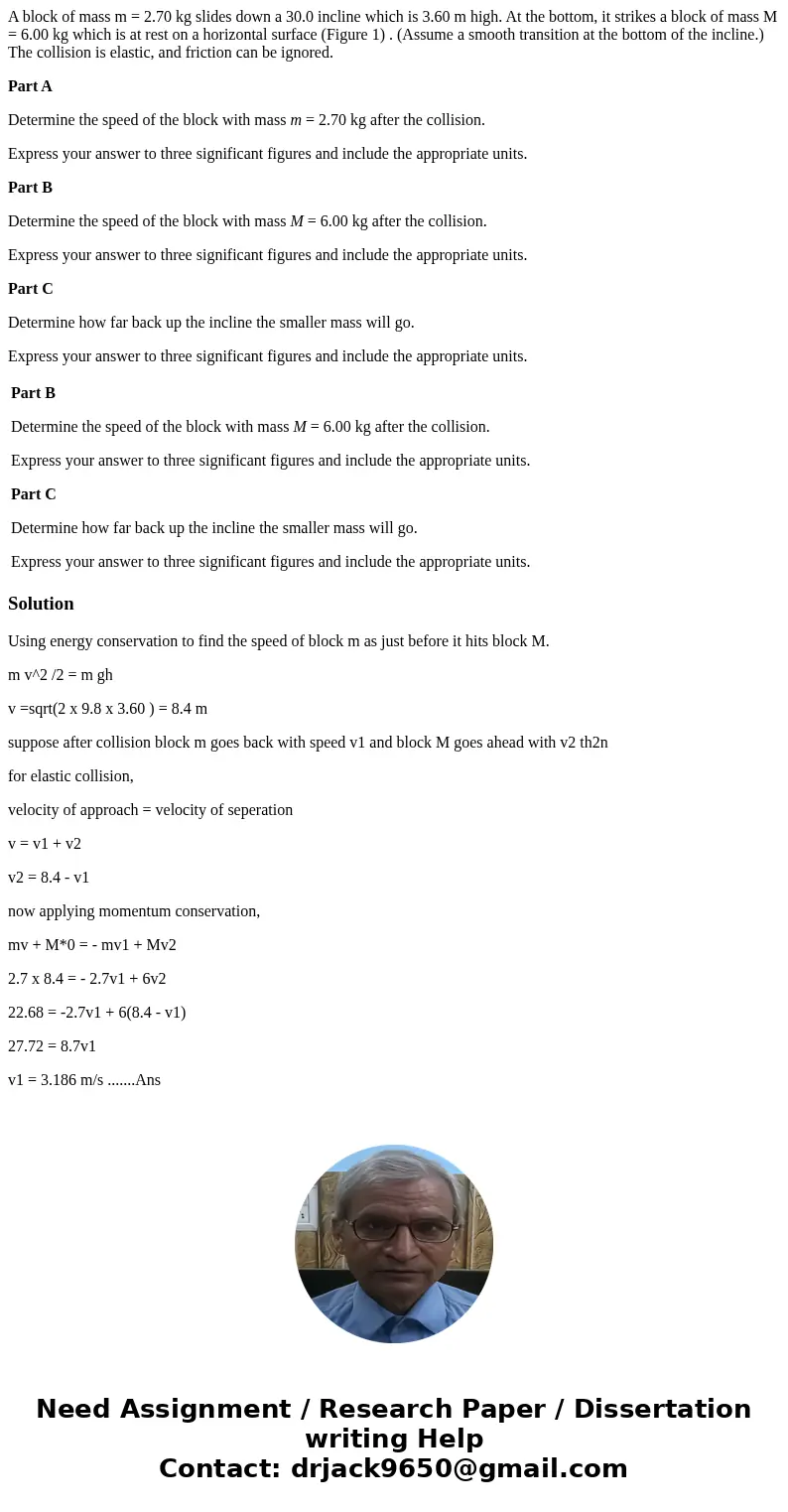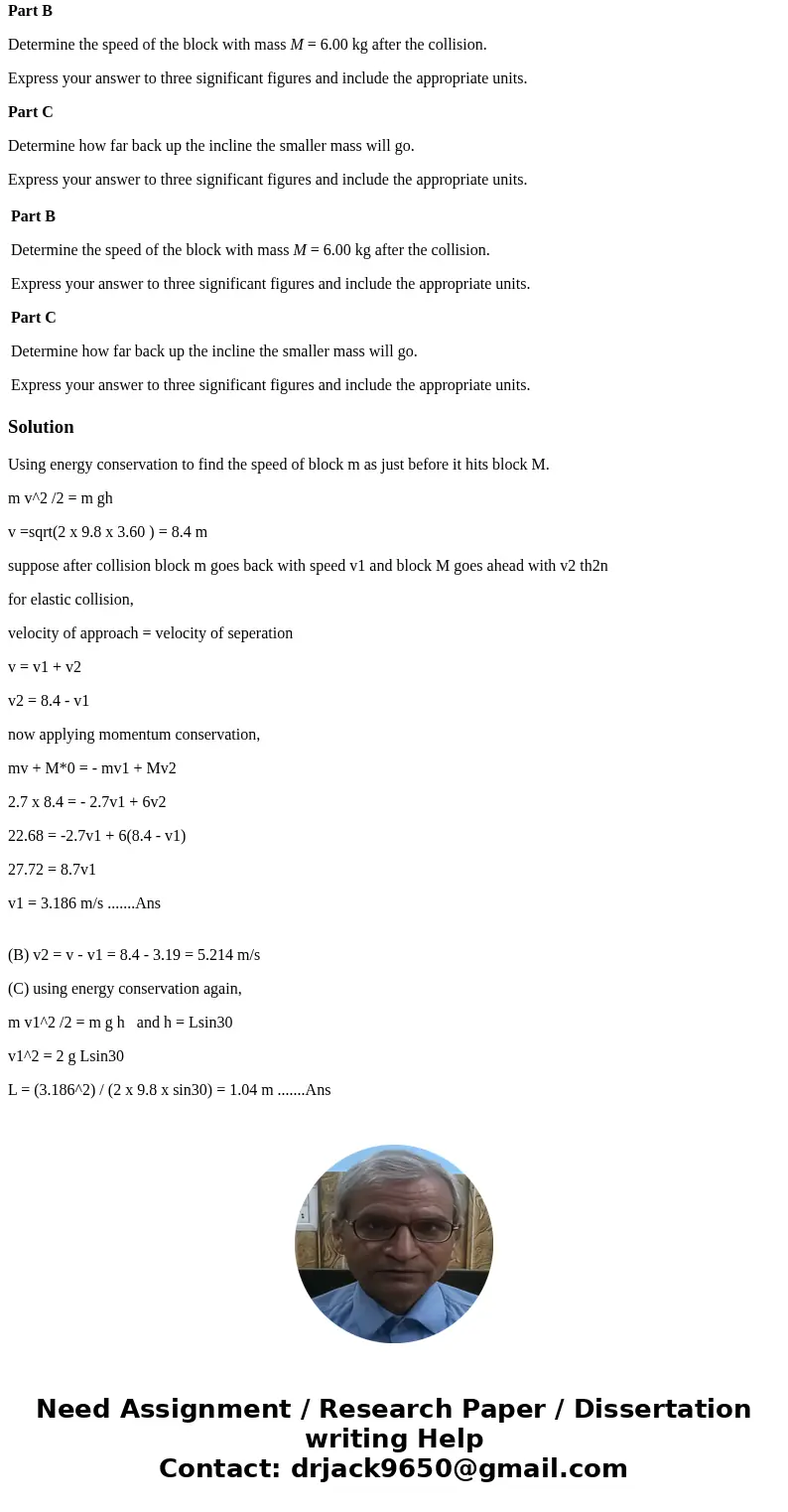A block of mass m 270 kg slides down a 300 incline which is
A block of mass m = 2.70 kg slides down a 30.0 incline which is 3.60 m high. At the bottom, it strikes a block of mass M = 6.00 kg which is at rest on a horizontal surface (Figure 1) . (Assume a smooth transition at the bottom of the incline.) The collision is elastic, and friction can be ignored.
Part A
Determine the speed of the block with mass m = 2.70 kg after the collision.
Express your answer to three significant figures and include the appropriate units.
Part B
Determine the speed of the block with mass M = 6.00 kg after the collision.
Express your answer to three significant figures and include the appropriate units.
Part C
Determine how far back up the incline the smaller mass will go.
Express your answer to three significant figures and include the appropriate units.
| Part B Determine the speed of the block with mass M = 6.00 kg after the collision. Express your answer to three significant figures and include the appropriate units. Part C Determine how far back up the incline the smaller mass will go. Express your answer to three significant figures and include the appropriate units. |
Solution
Using energy conservation to find the speed of block m as just before it hits block M.
m v^2 /2 = m gh
v =sqrt(2 x 9.8 x 3.60 ) = 8.4 m
suppose after collision block m goes back with speed v1 and block M goes ahead with v2 th2n
for elastic collision,
velocity of approach = velocity of seperation
v = v1 + v2
v2 = 8.4 - v1
now applying momentum conservation,
mv + M*0 = - mv1 + Mv2
2.7 x 8.4 = - 2.7v1 + 6v2
22.68 = -2.7v1 + 6(8.4 - v1)
27.72 = 8.7v1
v1 = 3.186 m/s .......Ans
(B) v2 = v - v1 = 8.4 - 3.19 = 5.214 m/s
(C) using energy conservation again,
m v1^2 /2 = m g h and h = Lsin30
v1^2 = 2 g Lsin30
L = (3.186^2) / (2 x 9.8 x sin30) = 1.04 m .......Ans


 Homework Sourse
Homework Sourse